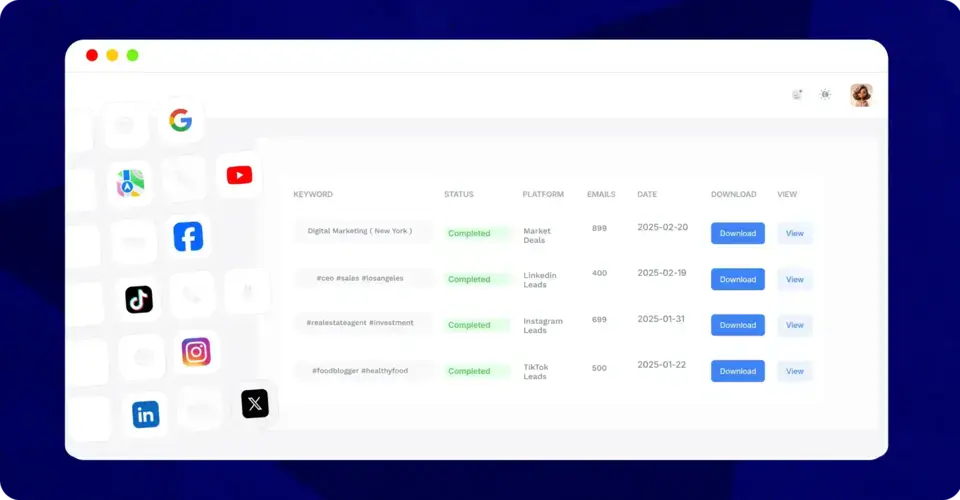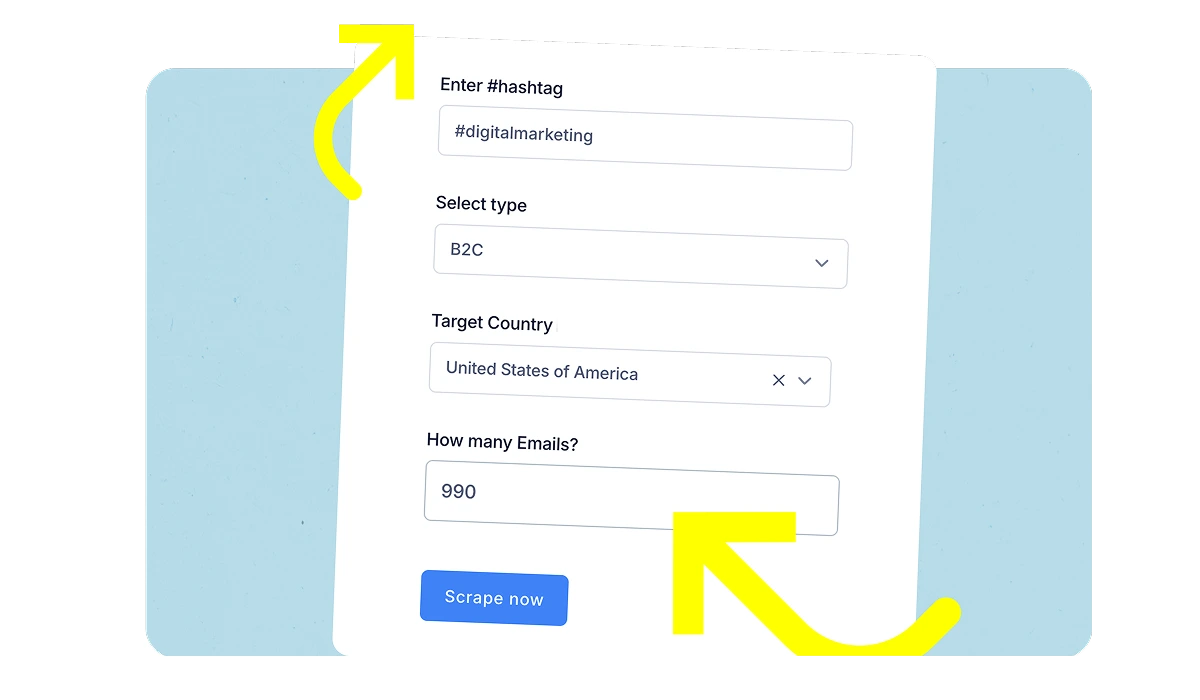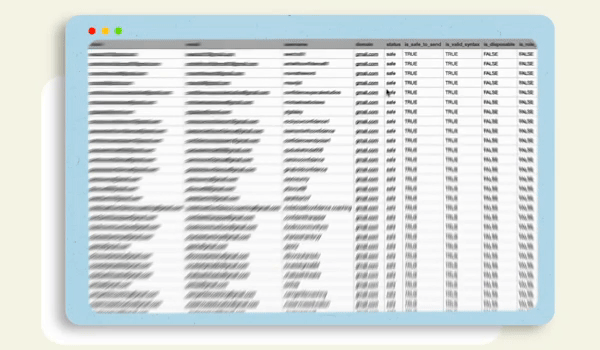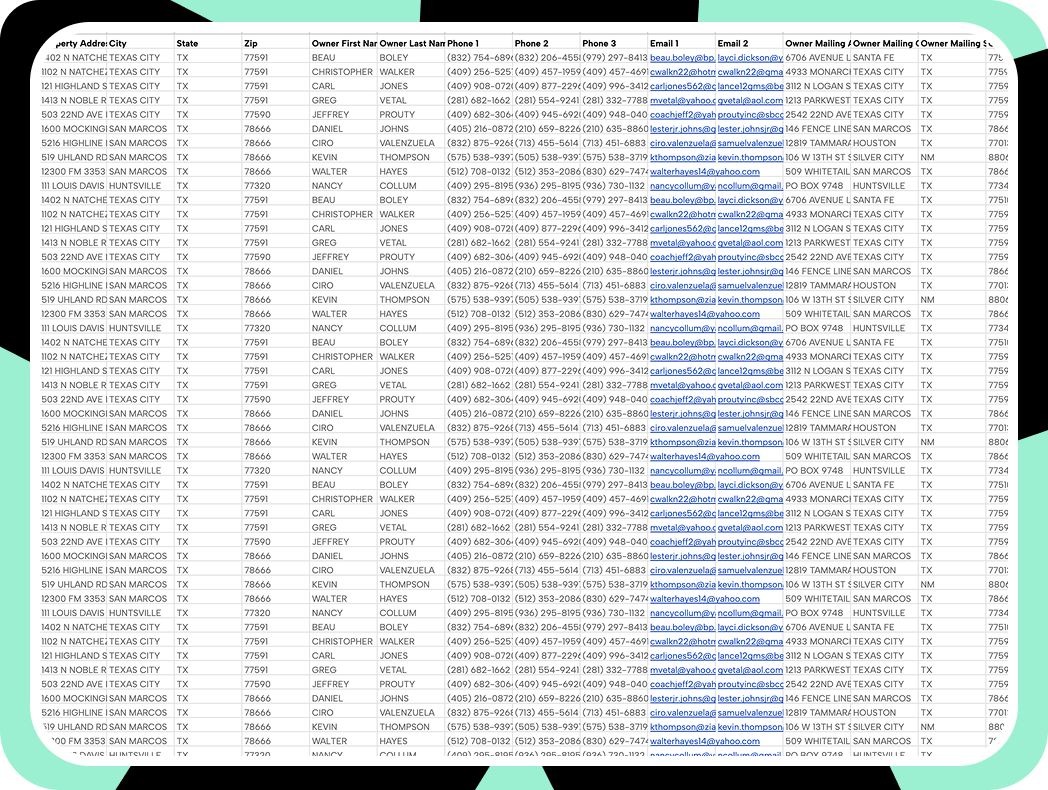More Platforms, More Leads, an All-in-One Solution
B2B is just one aspect. You can gather B2B leads from several specific social media platforms, giving you ownership over how you grow your business.
- Looking for LinkedIn contacts? Narrow your search by job title, industry, and region to connect with the right people.
- Focusing on local businesses? Use our Google Maps scraper to collect contact info effortlessly.
- Need leads from Twitter (X)? We’ll gather emails by searching through your top hashtags.
- Want to connect with Facebook groups? Easily extract key contacts from any Facebook community.
- Looking for young TikTokers? Find TikTok contacts and connect with key players.
Any Questions?
The B2B Email Scraper is a powerful data scraping tool designed to help businesses collect contact information from potential B2B clients across various platforms, allowing you to build comprehensive prospect lists in hours rather than days or weeks.
Yes, our B2B Lead Scraper is 100% legal and compliant with DMCA, CFAA, and all relevant data protection regulations. We only scrape publicly available information without using unauthorized access methods like multiple IPs or fake accounts.
You can generate 1000+ business contacts in just a few hours, depending on your search parameters and target industry. Our tool is designed for high-volume lead generation to maximize your prospecting efforts. We also offer a professional plan that provides unlimited leads.
Our tool works across multiple platforms including LinkedIn (search by job title, industry, and region), Google Maps (for local businesses), Twitter/X (gathering emails by hashtags), Facebook groups, and TikTok for influencer contacts.
Using our tool is simple: create an account (takes about 25 seconds), enter your B2B keywords, location, and desired number of leads, click “Start Scraping,” and then download your CSV file when the process is complete.
Using our tool is simple: create an account (takes about 25 seconds), enter your B2B keywords, location, and desired number of leads, click “Start Scraping,” and then download your CSV file when the process is complete.
The B2B Lead Scraper provides complete contact details of potential enterprise clients, including email addresses and phone numbers, giving you everything you need to start meaningful conversations with decision-makers.
No, there’s nothing to download or install. The B2B Email Scraper is a web-based tool that works directly in your browser, making it incredibly easy to use without any technical setup.
Our AI-powered tool recommends top-performing hashtags and keywords as you conduct your search, eliminating guesswork and helping you discover the right search terms for maximum results without switching between tabs.
Exporting your leads is simple with our drag-and-drop functionality. Your leads are just a click away and can be easily exported to a CSV file that integrates seamlessly with your CRM for your next campaign.
Our B2B contact harvesting solution gathers professional data from openly accessible digital repositories, such as industry directories, professional networking sites, and corporate web portals.






